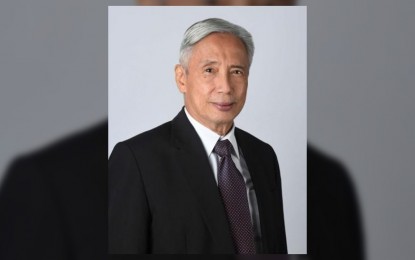[4.14] 메달라, 5월 BSP 금리 인상 움직임 일시중지 가능
컨텐츠 정보
- 14,886 조회
본문
MANILA – Bangko Sentral ng Pilipinas(BSP) 총재 "Felipe Medalla"는 국내 인플레이션율의 감속을 언급하면서 중앙은행의 금리 인상 사이클의 중단 가능성을 암시했습니다.
메달라는 19일(현지시간) 워싱턴DC에서 열린 정부 경제설명회에서 물가상승률이 전월 0.3%에서 2~3월 제로 성장을 기록했다고 밝혔다.
그는 "우리는 2~4%라는 목표를 향해 나아가고 있다고 생각한다"고 말했다.
3월 물가상승률은 전월 8.6%, 1월 8.7%에서 14년 만에 최고치인 연율 기준 7.6%로 둔화됐다.
올해 1분기 평균 물가상승률은 8.3%였다.
BSP는 올해 인플레이션을 평균 6%로 예상했으며 지난 분기에는 월별 인플레이션율이 목표 내 수준으로 감소하여 어떤 불미스러운 사건도 방지했습니다.
2024년 BSP의 평균 인플레이션 전망은 2.9%입니다.
2022년 5월부터 2023년 3월까지 중앙은행의 기준금리가 총 425bp 인상된 주요 요인은 국가의 높은 인플레이션율입니다.
"인플레이션 지문이 매우 좋기 때문에 다음 회의에서 우리는 아마도 일시 중지할 것입니다. 4월이 인플레이션이 매우 낮은 달로 바뀌면 3가지 좋은 점이 연속해서 나타나면 우리는 일시 중지할 수 있는 위치에 있습니다."라고 "Medalla"는 말했습니다.
BSP의 정책 결정 통화위원회(MB)의 다음 금리 결정 회의는 올해 세 번째인 5월 18일에 열립니다.
필리핀 통계청(PSA)도 5월 5일 4월 인플레이션 보고서를 발표할 예정이다.
한편, "Benjamin Diokno" 재무장관은 연설에서 호의적인 인구통계학적 프로필의 지속적인 성장과 투자 기회 등이 있습니다.
디오크노는 올해 국내총생산(GDP) 가정이 정부의 목표치(6.5~7.5%)를 넘어선 지난해 46년 최고치인 7.6%에 비해 낮아진 데 따른 것이라고 설명했다. 세계 경제 발전의 예상되는 영향.
그는 올해 성장 가정은 "높지만 실행 가능하다"고 말하면서 정부의 재정 건전성이 여전히 강하고 코로나19 대유행과 경제 재개 이후 세입이 지속적으로 증가하고 있다고 언급했다.
우선 "Diokno"는 인프라 투자가 계속 증가하여 경제 연간 생산량의 약 5~6%를 차지할 것이라고 말했습니다.
"인프라 지출은 우리 성장 전략의 전면이자 중심입니다. 우리는 평균 인프라 지출이 GDP의 2%에 불과한 2001년부터 2015년까지 인프라에 대한 수십 년간의 과소 투자를 되돌리기 위해 노력하고 있습니다.”라고 그는 말했습니다.
그는 2016년 정부가 "건설, 건설, 건설" 프로그램을 도입하면서 상황이 바뀌었다고 말했습니다.
“향후 6년 동안 우리는 이 높은 인프라 투자를 유지하기로 결정했지만 반전이 있습니다. 이번에는 강화된 민관 파트너십 메커니즘으로 정부 지출을 보완할 것”이라고 말했다.
"Diokno"는 이 메커니즘이 에너지, 물류, 운송, 통신 및 수자원 인프라를 크게 향상시킬 것이라고 말했습니다. (PNA)
THis is the original Article from PNA NEWS
[4.14] Medalla open to possible pause in BSP rate hike move in May
MANILA – Bangko Sentral ng Pilipinas (BSP) Governor "Felipe Medalla" hinted at a possible pause in the central bank’s rate-hiking cycle, citing the deceleration of the domestic inflation rate.
In his presentation during the government’s economic briefing in Washington DC on Wednesday (US time), "Medalla" said the rate of price increases posted zero expansion from February to March from a 0.3 percent rise in the previous month.
“We think we’re on our way towards our target of 2 (percent) to 4 percent,” he said.
The inflation rate in March slowed down to 7.6 percent on an annual basis from 8.6 percent in the previous month and the 14-year high of 8.7 percent in January.
Average inflation in the first quarter this year stood at 8.3 percent.
The BSP forecast inflation to average 6 percent this year, with the monthly inflation rate decelerating to within-target levels in the last quarter barring any untoward incidents.
For 2024, the BSP’s average inflation forecast is 2.9 percent.
The elevated inflation rate in the country is the primary factor for the total of 425 basis points increase in the central bank’s key rates from May 2022 to March 2023.
“We’re probably pausing in the next meeting because the inflation prints are very good. If April turns to be a very low inflation month, so that’s three good points in a row, we are in the position to pause,” "Medalla" said.
The next rate-setting meeting of the BSP’s policy-making Monetary Board (MB) is on May 18, the third for the year.
The Philippine Statistics Authority (PSA) is also scheduled to release the April inflation report on May 5.
Meanwhile, Finance Secretary "Benjamin Diokno," in his speech, said domestic growth this year is seen to remain resilient, with the assumption of an expansion of between 6 percent and 7 percent, given the continued growth of a favorable demographic profile and a lot of investment opportunities, among others.
"Diokno" said the lower gross domestic product (GDP) assumption for this year compared to the higher-than-expected 46-year high of 7.6 percent last year, which exceeded the government’s 6.5 percent to 7.5 percent target band, is due to the expected impact of global economic developments.
The growth assumption for this year remains “high but doable,” he said, noting that the government’s fiscal health remains strong, with revenues continuously rising after the pandemic and the reopening of the economy.
For one, "Diokno" said, infrastructure investments would continue to rise and account for about 5 percent to 6 percent of the economy’s annual output.
“Infrastructure spending is front and center of our growth strategy. We are committed to reverse the decades-long under-investment in infrastructure from 2001 to 2015, where average infrastructure spending is only at 2 percent of GDP,” he said.
He said the situation changed in 2016 when the government introduced the “Build, Build, Build” program, which some said is the golden age of infrastructure in the country.
“For the next six years, we are determined to sustain this high infrastructure investment but with a twist. This time, we will complement government spending with the enhanced public-private partnership mechanism,” he said.
"Diokno" said this mechanism would greatly boost energy, logistics, transportation, telecommunications, and water infrastructure. (PNA)
관련자료
-
이전
-
다음


